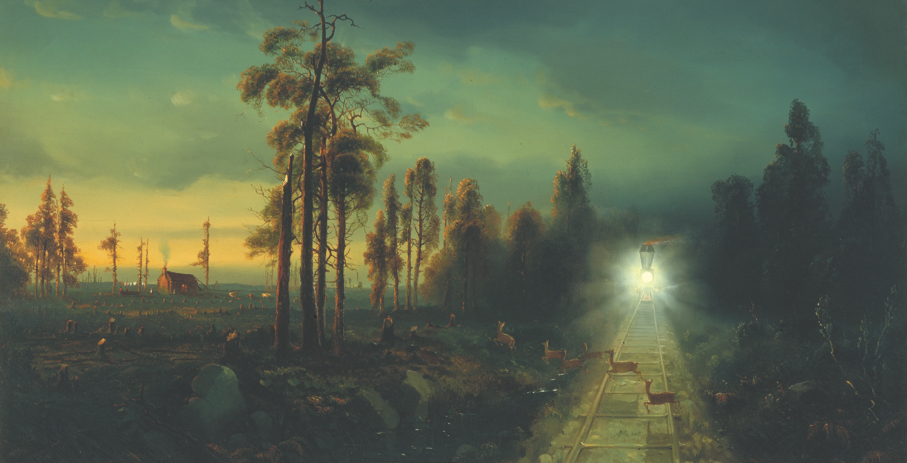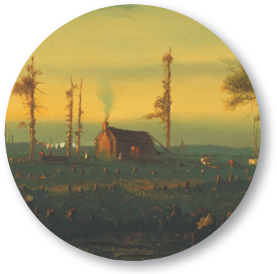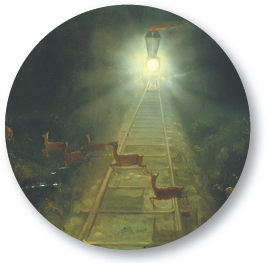Visualizing History: The Path of Progress
Printed Page 308 Chapter Chronology
Visualizing History: The Path of Progress
The Path of Progress

This painting depicts a mid-nineteenth-century landscape of agricultural and industrial progress. Created by Andrew Melrose to celebrate the recently built railroad connecting Chicago and Council Bluffs, Iowa, almost four hundred miles to the west, the painting contrasts the irregularity of nature with the new principles of order imposed on the natural landscape by human beings.

What principles of order are suggested by the locomotive and the railroad tracks? How do they contrast with the natural order represented by the forest on the right side of the painting, by the rock-studded vegetation on either side of the rail bed, and by the deer scampering across the tracks?
The locomotive barreling down the tracks is barely visible behind its blazing headlight, which illuminates the way forward and startles the deer accustomed to shadowed hiding places in the forest. What does the contrast between the immense power of the locomotive and the skittish, vulnerable deer suggest about industrial progress? Likewise, how do the speed, direction, and glaring headlight of the locomotive contrast with the obstacles to progress in the painting? Are the deer headed toward progress? Why or why not?
The left side of the painting shows a frontier farm cultivated by a family standing in the shadow of the log cabin. How do the principles of agricultural order represented by the farm compare with those of the industrial order represented by the railroad and the natural order represented by the forest? What attributes of familial order are visible in the depiction of the farm? Do these attributes differ from the attributes of order among the deer?
To what extent does the farm suggest agricultural progress? Why have so many trees been chopped down? Why are the stumps littering the fields? What do these farming practices suggest about the farm family's attitudes toward nature?

Notice that the family is not watching the natural beauty of the setting sun bathing the landscape in a golden twilight but instead is looking toward the artificial light of the locomotive. Why might they have gathered outside their cabin to watch the train? What does their interest in the locomotive suggest about their attitudes toward the railroad?
The smoke rises vertically from the chimney of the log cabin, yet it trails backward from the smokestack of the locomotive. What does this contrast suggest about the differences between agricultural and industrial progress?
Overall, what does this painting suggest about the benefits and costs of progress for the farm family, the forest, the deer, the railroad, and American society in general?
SOURCE: Museum of the American West, Autry National Center, 92.147.1.; Detail: Museum of the American West, Autry National Center, 92.147.1.
CONNECT TO THE BIG IDEA

Question
How did Americans alter the physical landscape of the nation in the early nineteenth century?